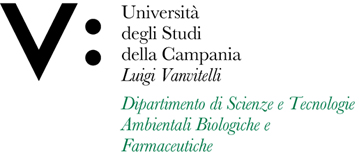Michele SAVIANO
Insegnamento di DESIGN OF BIOACTIVE COMPOUNDS
Corso di laurea magistrale in MOLECULAR BIOTECHNOLOGY
SSD: CHIM/08
CFU: 6,00
ORE PER UNITÀ DIDATTICA: 48,00
Periodo di Erogazione: Primo Semestre
Italiano
| Lingua di insegnamento | INGLESE |
English
| Teaching language | English |
| Contents | Molecular recognition in biomolecules |
| Textbook and course materials | Bibliography provided by the teacher |
| Course objectives | The aim of this course is to introduce the theory and practice for the design of bioactive compounds using different theoretical and experimental techniques of Structural Chemistry and Biology (X-ray diffraction, NMR spectroscopy, Computational techniques). At the end of the course,the student knows the chemical basis of the structure and structural and functional properties of natural and synthetic peptide systems and is able to understand the logic that governs their design to perform specific biological functions. It is able to find information on the structure of peptide systems and complexes with proteins and nucleic acids in databases and to analyze their spatial structure. Understands the importance, through specific examples, of knowledge of peptide chemistry in application fields such as diagnostics and pharmaceuticals |
| Prerequisites | No propaedeutic. Basic knowledge of Inorganic and Organic Chemistry, Mathematics, Physics, Biochemistry and Biology |
| Teaching methods | The attendance to the lessons is mandatory. The course is organized in 48 hours of frontal lessons that will be theoretical and practical. |
| Evaluation methods | The final examination will consist in an oral interview, aimed to verify the notion acquired and the ability of the student to re-elaborates the contents presented during the course. In particular, the oral examinations are aimed to evaluate the capability of reasoning and connecting the various arguments of the course and is constituted by questions about the theoretical part of the course to evaluate the knowledge of the studied subjects and the capability to organize the exposition and connection of the diverse arguments. |
| Other information | During the course slides and notes of the lectures will be provided to the students via Teams. |
| Course Syllabus | Programma esteso PROGR_EST Sì - The Peptides. Nomenclature. Non-natural amino acids. Permitted conformations. Ramachandran maps of natural and non-natural amino acids. Characteristics of the peptide bond. Acidity and basicity in peptides, calculation of the isoelectric point. |








